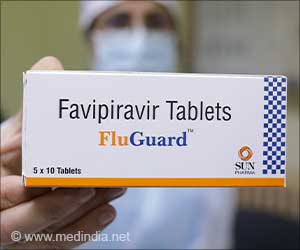A new study published in the journal Frontiers in Psychology indicates that shopping addiction is more common among depressed women with low self-esteem.
The study, which reveals some definite tendencies among individuals due to which they develop a shopping dependency, also shows that the women tend to visit shopping malls more often as it helps them to avoid unpleasant feelings.According to the study, the signs of shopping addiction is closely connected to drug addiction, alcoholism, and other types of addictions.
"We found that shopping addiction is related to symptoms of anxiety, depression, and low self-esteem - although shopping addiction may also lead to such symptoms," said clinical psychologist Cecilie Schou Andreassen from the Faculty of Psychology at the University of Bergen in Norway. Andreassen is also a visiting scholar at Yale University, School of Medicine, USA.
The researchers add that shopping addiction is also connected to key personality traits.
"Our research indicates that people who score high on extroversion and neuroticism are more at risk of developing shopping addiction," added Andreassen, who used the "Bergen Shopping Addiction Scale" to get to these results.
This unique scale, which was developed in 2014 is a new method of analyzing the addiction and is based on core addiction elements.
The scale uses seven basic criteria to recognize the addiction, where all items are scored on the following scale:
- You think about shopping all the time.
- You buy things in order to change your mood.
- You shop or buy so much that it negatively affects your daily commitments (e.g., school and work).
- You feel you have to shop more and more to get the same satisfaction level as before.
- You have decided to shop less but have not been able to do so.
- You feel bad if you are prevented from shopping.
- You shop so much that it has impaired your well-being.
The scale can reliably differentiate between shopping addicts and non-addicts and showed that shopping addiction is more predominant in women than men.
Addictive shopping in women is typically initiated in late adolescence and emerging adulthood. However, it was seen that the addiction appears to decrease with age.
The researchers further explain that extroverts, who are typically social and attention-seeking kind, may be using shopping to improve their personality, enhance their social status and lead a glamorous life.
On the other hand, neurotic people, who typically are anxious, depressive, and self-conscious, may use shopping to stay away from their negative feelings.
People who are conscientious, responsible and who like new things and new intellectual stimuli are less likely to develop shopping addiction. They typically have good self-control and avoid most of the issues related to shopping. They may also consider shopping as a conventional process at odds with their often unconventional values.
The researchers concluded that the scale could facilitate treatment and estimate the prevalence of shopping addiction in the general population worldwide.
References:
1. Andreassen, C. S., Griffiths, M. D., Pallesen, S., Bilder, R. M., Torsheim, T., & Aboujaoude, E.: The Bergen Shopping Addiction Scale: reliability and validity of a brief screening test. Frontiers in Psychology, 2015;http://dx.doi.org/10.3389/fpsyg.2015.01374.
2. http://journal.frontiersin.org/article/10.3389/fpsyg.2015.01374/full
Source-Medindia










